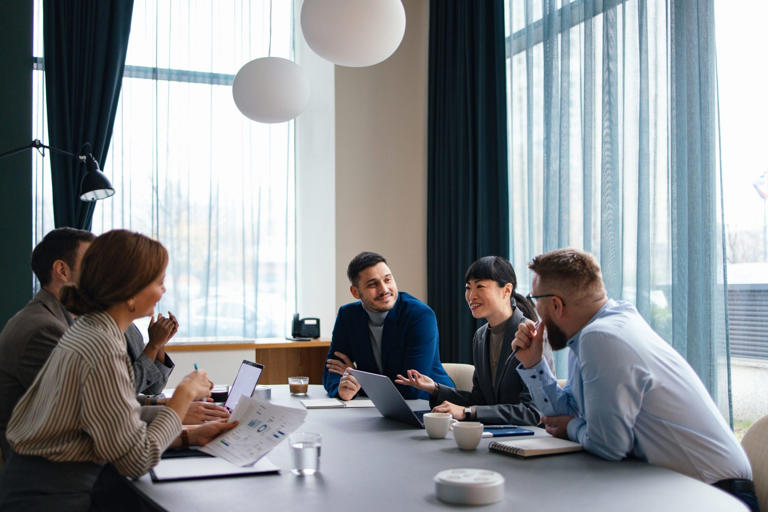Neil Murray’s insights from JLL underscore a profound transformation in how businesses perceive and utilize office spaces in a post-pandemic world. Here’s an expanded view on the evolving dynamics:
Shifting Perspectives on Office Spaces
Neil Murray, CEO of Work Dynamics at Jones Lang LaSalle (JLL), emphasizes a pivotal shift in the approach to office design and utilization. Traditionally, offices were seen as static environments primarily for work and meetings. However, the COVID-19 pandemic catalyzed a reassessment, prompting businesses to question the fundamental purpose of physical office spaces when remote work proved effective.
Emphasizing Human Behavior and Well-being
In response to this paradigm shift, businesses are increasingly integrating insights from various disciplines like sociology, psychology, and anthropology into office space design. These diverse perspectives help in understanding how spaces influence employee behavior, satisfaction, and productivity. Murray suggests that creating office environments conducive to well-being and social interaction has become paramount.
Beyond Traditional Amenities
While traditional perks such as free lunches or onsite gyms were once touted as ways to attract employees to the office, their effectiveness is being reevaluated. Murray notes that the most compelling draw for employees is the opportunity for social interaction. This insight has prompted businesses to focus less on lavish amenities and more on creating spaces that foster community and collaboration.
Generational Differences in Workplace Expectations
Another critical consideration is the generational divide in workplace preferences. Murray points out that younger workers, particularly those from Generation Z, who experienced remote learning during their education, have distinct expectations regarding work environments. Their preferences often lean towards flexible spaces that accommodate both focused work and social interaction, reflecting a blend of digital connectivity and personal engagement.
Hybrid Work Models
In response to these evolving needs, many companies are adopting hybrid work models. These models typically involve employees spending a portion of their workweek in the office and the remainder working remotely. Murray observes that younger and early-career professionals tend to favor more time in the office compared to mid-career professionals, who may value flexibility and autonomy more.
Challenges and Adaptations
Despite the push towards hybrid work, challenges remain, particularly regarding office space utilization. The downsizing of office footprints during the pandemic has led to logistical issues when implementing hybrid schedules. Companies must balance the need for collaborative spaces with the practical limitations of physical office capacities.
Future Outlook
Looking ahead, Neil Murray anticipates a resurgence of designated workspaces within offices, countering the trend towards fully unassigned seating arrangements. This adjustment aims to provide employees with a sense of ownership and personalization in their workspace, even amidst rotational desk usage.
Conclusion
In conclusion, the evolution of office spaces post-pandemic reflects a broader understanding of workplace dynamics and employee expectations. Businesses are moving away from a one-size-fits-all approach to office design, instead embracing flexibility, inclusivity, and holistic well-being as central tenets of their workplace strategies. By integrating insights from behavioral sciences and adapting to generational shifts, companies aim to create environments that not only attract employees back to the office but also enhance their overall experience and productivity.
This approach not only acknowledges the lessons learned from remote work but also leverages them to redefine the role of physical office spaces in fostering collaboration, innovation, and employee satisfaction in the future.
